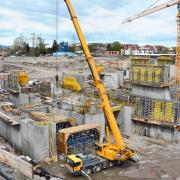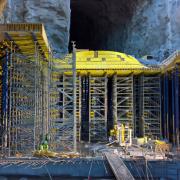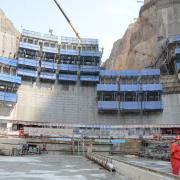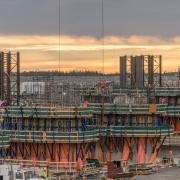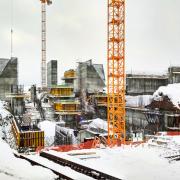Press Contact
Impressions
More than 2000 years ago, the ancient Greeks harnessed the power of streams to drive millwheels and grind grain to flour. In modern times, water power is one of the most cost-effective ways of generating electricity and it is often the method of choice, whenever available. Norway, for example, generates 99 % of its electricity from hydropower. In principle, hydropower utilises flowing water to drive turbines. The turbines are either driven by dammed water from reservoirs or are installed in what are known as run-of-river hydroelectric stations. Depending on the capacity of the reservoirs they impound, hydroelectric dams can store water for short or long periods to cover the demand for energy. In a run-of-river hydroelectric station, the flowing water is channelled through the turbine. The amount of energy generated by a plant of this kind depends on the flow rate. In most cases, there is only a slight difference in height between headwater and tailwater.
Know-how from many years of experience in power-plant construction
The history of Doka is closely connected to the construction of power stations. The name Doka has its origin in the supply of formwork components for the Austrian Donaukraftwerke (DOKW) [Danube Power Stations] in the 1950s. The company’s experience of decades in international power station construction is at the disposal of Doka customers for their projects. Doka dam formwork systems are among those tried and proven many times over in dam and barrage construction for hydroelectric power stations.
Dam formwork is used for one-sided forming of structures such as dams and barrages without the use of form ties. The climbing scaffold transfers the concrete loads to the previous pouring section. The dam formwork with its system versions offers economical standard solutions for block heights up to 5.00 m without additional mounting parts and ties. It also adapts flexibly to project-specific requirements because it combines with framed, beam and steel formwork systems. Enclosed, generously dimensioned working platforms up to 2.80 m wide ensure safe working conditions.
High-performing service for successful projects
Doka applies its wealth of formwork and concrete-engineering competence to develop the ideal formwork solution for the project and the chosen method of construction. All this, combined with high-performing service packages, produces an optimised customer solution well able to deal with the challenge of meeting and beating the set of project-related requirements. An all-inclusive logistics concept contributes significantly to success on power station builds with different construction lots. Doka develops end-to-end formwork concepts with detailed utilisation plans through to 3D planning of complex construction lots and utilises synergies between construction lots to save materials. Integrating BIM (Building Information Modelling) into power station projects enables formwork solutions to integrate seamlessly and cost-effectively into construction and eliminates possible future interface problems while the project is still in the planning phase. Doka considers skilled engineering support on site essential for these power-plant projects. Formwork instructors from Doka support the team on site, ensuring professional instruction for the crew and correct assembly and handling of the formwork systems.
This could also be of interest for you:
Do you have any questions on the article? Get in touch with us!
